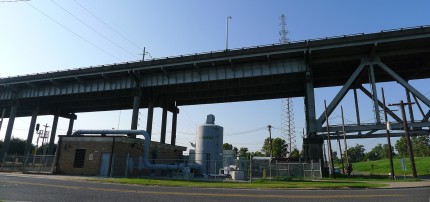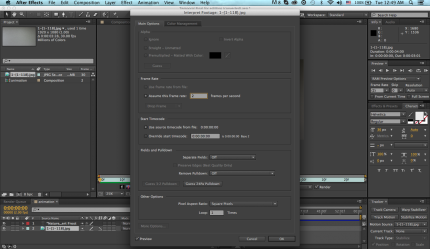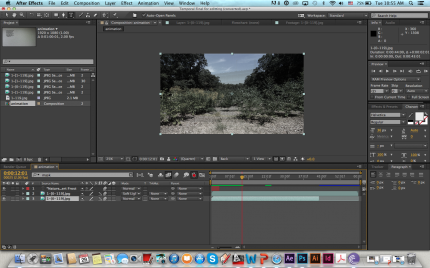Time Lapse Video, After Effects and Changes in Nature
“Nature’s first green is gold,
Her hardest hue to hold.
Her early leaf’s a flower;
But only so an hour.
Then leaf subsides to leaf.
So Eden sank to grief,
So dawn goes down to day.
Nothing gold can stay.”
― Robert Frost
I continued my narrative about changes in landscape that was showed in my triptych.
The concept of my video is to show that nothing lasts forever in nature. I used my base image of the I-10 bridge and transform it to different images showing changes in landscape in different time. My narrative focuses on the relationship between the infrastructure represented by the bridge and the ecology.
base photo
Techniques
I made the images for time lapse sequences in Photoshop and imported them as JPEG sequence in After Effects. The names of the images should be in alphabetical order or numeric order. I selected File>import file and chose JPEG sequence.
After importing the sequence, I used the shortcut by press “command + k (or ctrl + k) for composition settings and set the video length.
Then, I adjusted frame rate per second by right click at the sequence and selected interpret footage>main.Then, the JPEG sequence became longer. I stretched the timeline for the sequence to become a longer video.
I inserted texts an the beginning of the video by using type tool and adjusted the time frame for the texts to appear in the video in the timeline.

Then, I enabled frame blending function in the JPEG sequence and chose the frame blending effect by clicking at layers>frame blending>frame mix.
I used the shortcut command+Shift+d to split the movie layer. Then, I adjusted the opacity of the new layer to 50% to create the different effect at the beginning of the video.
Then, I rendered.
*Time-lapse photography is a technique whereby the frequency at which film frames are captured (the frame rate) is much lower than that used to view the sequence. When played at normal speed, time appears to be moving faster and thus lapsing.
Some classic subjects of timelapse photography include:
- cloudscapes and celestial motion
- plants growing and flowers opening
- fruit rotting
- evolution of a construction project
- people in the city
The technique has been used to photograph crowds, traffic, and even television. The effect of photographing a subject that changes imperceptibly slowly, creates a smooth impression of motion. A subject that changes quickly is transformed into an onslaught of activity. (Wikipedia)









